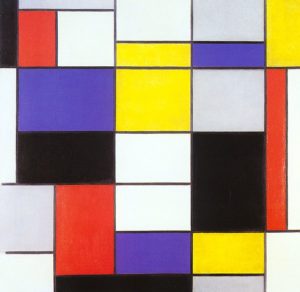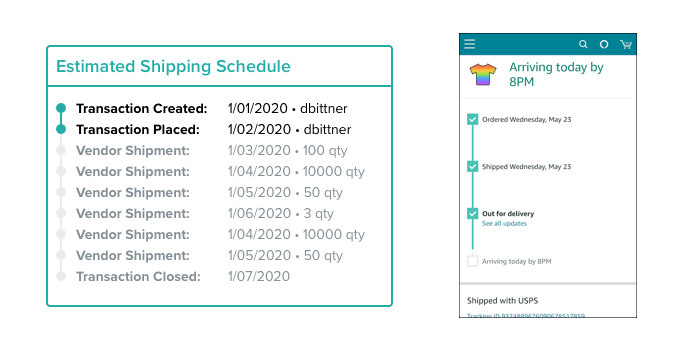As a UX designer at Ginkgo, I spend every day designing software interactions that bring our scientists’ visions to life and redefine what is possible in biotech. My job often feels like trying to reverse engineer a science fiction novel. Making the impossible possible is a super cool job that comes with no shortage of unique product challenges. To face such gigantic challenges, I lean heavily on abstraction and metaphor as a design strategy.
Abstraction
Abstraction is my favorite word. It’s loaded with many possible definitions and interpretations. For example, there’s abstract art, data abstraction in computer science, and the abstract of a scientific paper. In the context of design strategy, I consider abstraction a process of reduction and dissociation.
For example, suppose I am tasked with designing a mockup for a user story that says: “The user can check the status of their synthetic DNA library while it’s in production.” First, I begin by taking the user story outside of the context of biotech. To make my life simple, I just delete words like “synthetic DNA library” and replace them with words like “thingamajig”. That’s dissociation for you – easy!
Once I’ve disassociated the design challenge from the context of biotech, I can look at the problem a little more objectively. My next goal is to reduce the design challenge to its essence. Revisiting the user story above, it’s now clear to me that the user simply placed an order for something and wants to know when they will get it. What was seemingly a complex feature now feels much more straightforward to design.

Metaphor
After boiling down the task to its most simple ingredients, I brainstorm other common tasks out in the world that feel similar. My aim is to establish a metaphor connecting the novel design challenge to something familiar and comfortable.
In this instance, synthesizing DNA kind of feels like shopping for clothes online. It turns out ordering a synthetic DNA library is not unlike ordering the same shirt in multiple sizes to see which one fits best. The metaphor isn’t perfect, but it’s a great start to designing an interface. Most people have clear cut expectations around how a shopping website should work. If I design with this in mind, users will perceive my interaction as intuitive and self-explanatory.

Summary
As a UX designer in a highly technical field, I rely on abstraction and metaphor in my daily work. Leveraging abstraction and metaphor as a design strategy means I can take bleeding edge scientific processes and make them feel familiar and commonplace. When I do this well, the scientists at Ginkgo get to focus more on what they actually care about (science!) and spend less time worrying about the logistics of conducting their experiment. That’s how my role as a UX designer fits into Ginkgo’s mission of making biology easier to engineer.
